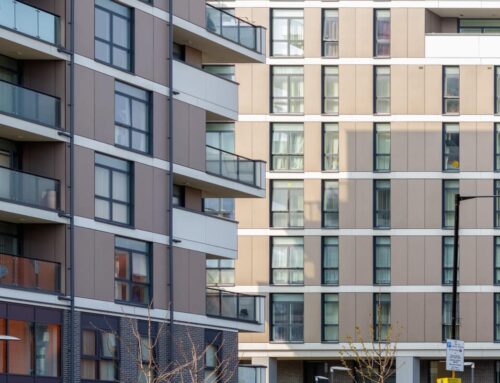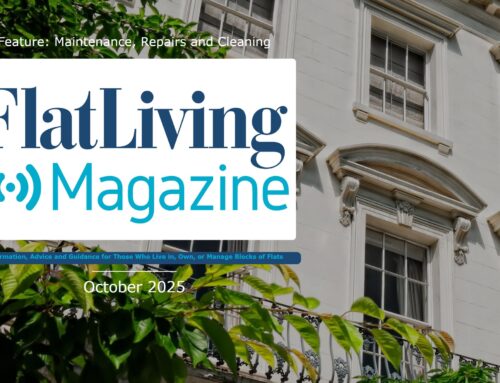A Reminder of Where This All Began
Building safety has been a hot topic in the UK since the horrendous Grenfell Tower fire in 2017. With so many lives lost, the government was forced to focus on cladding issues, general fire safety and with whom the responsibility lies to complete remedial work across the country. Their investigations have resulted in various new regulations coming into effect. In 2024, these changes continue to reshape insurance policies, premiums and requirements – especially for blocks of flats and high-rise buildings.
The Building Safety Act and Insurability of High-Rise Buildings
The Building Safety Act, introduced to improve safety standards, has brought stringent regulations into effect. These regulations are aimed at preventing tragedies, like Grenfell, from recurring. A key impact of the Act has been its effect on the insurability of high-rise residential buildings. New rules require building owners and managers to meet specific safety standards, with a primary focus on the design, construction and occupation stages of a building’s life. For insurers, this legislation means evaluating properties more stringently than was previously required, before offering coverage. High-rise buildings that do not meet the new standards face higher premiums or may even struggle to secure insurance at all. Some insurers require comprehensive safety documentation before issuing policies, which has pushed many building owners to prioritise updates and remedial works. By improving the overall risk profile of high-rise buildings, the Act has helped reduce the likelihood of severe incidents. But while this is overwhelmingly positive, it has also resulted in increased insurance costs for leaseholders during a cost-of-living crisis.Fire Safety and the Impact of EWS1 Forms on Premiums
The External Wall System 1 (EWS1) form (introduced in response to concerns over cladding and external fire risks) has become central to the insurance assessment process. The form provides a safety evaluation of a building’s exterior walls and cladding materials which are crucial for insurers assessing fire risk. Buildings without a valid EWS1 form often face steeply increased premiums. Some are deemed uninsurable. Properties that pass the EWS1 assessment can generally secure more affordable insurance. For many building owners, obtaining a clean EWS1 form has become a priority, although the cost and availability of the required assessments can be challenging.Insurance Requirements for Building Safety Remediation Works
In line with the Building Safety Act, insurers now often demand evidence of ongoing or completed remediation works before issuing policies for high-risk buildings. These remediation efforts, usually focused on cladding removal, fire safety systems and structural improvements, are costly and time consuming. However, without proof of these improvements, securing insurance is increasingly difficult. Buildings under remediation may be eligible for conditional insurance coverage, though at a premium rate. Some insurers offer incentives for completed works such as discounted premiums or broader coverage. This push for remediation work aligns with government goals to make high-rise buildings safer, but has led to significant financial burdens for leaseholders and building owners, who often shoulder the cost of these improvements.The “Golden Thread” and Its Influence on Risk Management
The “Golden Thread” principle, introduced as part of building safety reforms, is a concept that aims to create a continuous, transparent record of all decisions, designs and changes made to a building throughout its lifecycle. This record-keeping approach ensures that everyone involved in the building’s maintenance and operation has access to critical safety information. For insurers, the Golden Thread offers a clearer understanding of a building’s risk profile, allowing for more accurate assessments and potentially lower premiums if risk management is proven to be strong. The comprehensive documentation of safety measures, from construction to occupancy, enables insurers to tailor policies more precisely. By reducing uncertainty, the Golden Thread fosters trust between building managers, owners and insurers, resulting in more predictable and stable insurance costs for compliant properties.Conclusion
As 2024 draws to an end, the insurance landscape for high-rise residential blocks is heavily shaped by new safety regulations. The Building Safety Act and other safety requirements have led to heightened scrutiny for insurers and increased premiums for buildings that fall short of new standards. Additionally, the insistence on remediation works and the Golden Thread’s role in improving transparency have pushed the industry towards a more informed and risk-managed approach. While these changes contribute to safer, more resilient buildings, they have also placed financial and logistical pressures on building owners and leaseholders. As regulations continue to evolve, the insurance sector will need to balance affordability with safety, ensuring that coverage remains accessible without compromising the high safety standards the public expects. The impact of these regulations, though challenging, marks a significant step toward a safer built environment across the UK.
For a flats insurance quote today, visit the Residentsline website or call a member of our team at 0800 281 235.




Leave A Comment